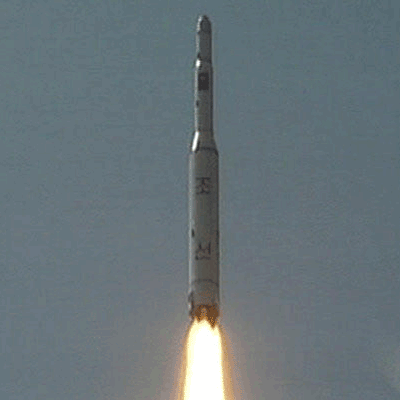Why did North Korea’s rocket launch fail?
A lot was made of the launch, but everyone quickly realized that it was all much ado about nothing.
Late last week, North Korea launched its controversial Unha-3 rocket despite heavy protests from some of the world’s largest powers, including the U.S., Britain, and Japan. After about one minute of flight, though, the 100-foot rocket exploded and its parts fell into the Yellow Sea.

North Korea’s Unha-3 rocket during in the midst of takeoff (Via: csmonitor.com)
The Unha-3, based on the TaepoDong-2 missile, was jointly developed by North Korean and Iranian rocket engineers. It was meant to fly south, to the west of the Korean peninsula between Japan and the Philippines. Upon review of its flight, experts believe that the rocket likely exploded due to severe vibrations at Max Q, or maximum dynamic air pressure.
More specifically, Max Q is the point where aerodynamic stress on the rocket as it is traveling through the atmosphere is at its greatest. The rocket created by the North Korea-Iran team was unable to throttle itself up or down to relieve said stresses and as a result, it splintered into several pieces and fell into the water below.
According to US NORTHCOM, the actual launch of the rocket lasted just a few minutes, before first stage pieces dropped into the sea about 102.5 miles west of Seoul, South Korea; the agency also reported that the missile’s other two stages failed as well, luckily with no debris falling on land.
Insight on the launch
The South Korean government estimates that their controversial neighbor to the north spent an estimated $450 million (USD) on the failed test.
The timing of the launch was meant to honor the 100th anniversary of Kim Il-sung’s birth, grandfather to Kim Jong-un, North Korea’s current dictator. There was a lot of tension surrounding the event, with many of the aforementioned countries claiming that a satellite attached to the rocket was a cover for what was clearly a long-range missile test. Their argument was that the test violated UN resolutions on nuclear and missile activity.
According to North Korea, however, the launch was meant to place a satellite into a 310-mile circular polar orbit.
Failure fallout
The failure of the launch is made even more humiliating because of all the attention that the country had received surrounding the event itself. The government even went so far as to invite a group of foreign press to visit the launch site and missile command and control center prior to the rocket’s blastoff.
Many of those invited reported afterwards that government briefers were no longer available for comment after the rocket exploded. It is now feared that the scientists and engineers associated with the rocket will face prison sentences or death as scapegoats for the project’s failure.
■
Via: GlobalSecurity.org
Advertisement
Learn more about Electronic Products Magazine





